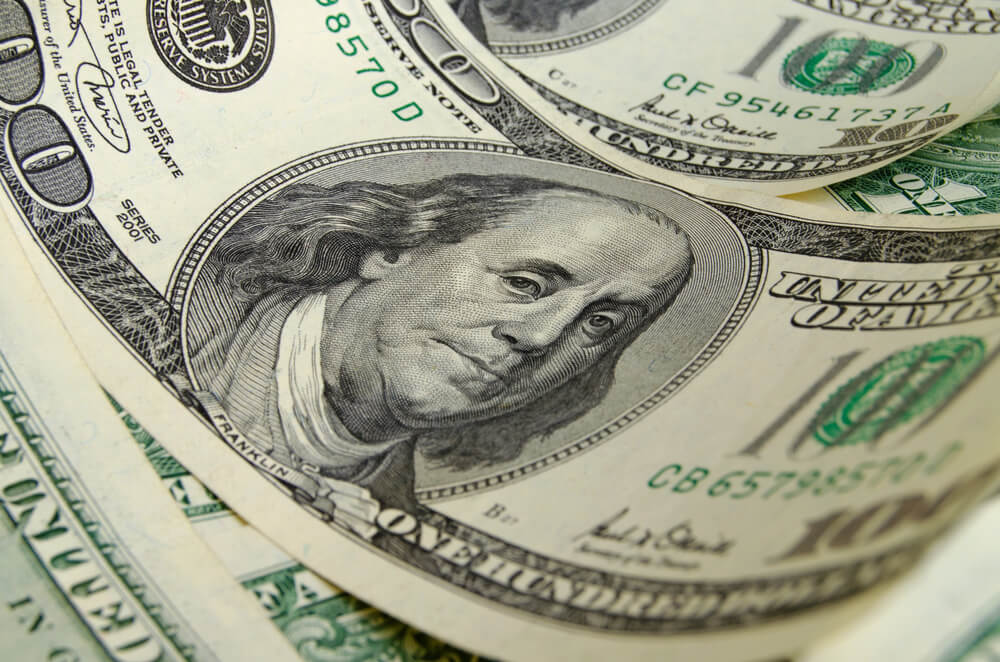Dollar Inches Higher as Traders Await ECB Decision and U.S. Data Releases

U.S. dollar edges up but remains near two-week lows amid a quiet data week.
Euro slips slightly ahead of Thursday’s European Central Bank (ECB) policy decision.
Traders eye upcoming U.S. economic data and a possible short-term dollar rebound.
Yen strengthens further, marking a fourth day of gains following U.S.–Japan trade deal.
Markets watching for developments from both the Fed and Trump’s unexpected central bank visit.
The U.S. dollar ticked slightly higher on Thursday, though it remains near its lowest levels in two weeks, as markets prepare for key economic data and the European Central Bank’s latest rate decision.
As of 04:40 ET (08:40 GMT), the Dollar Index—which tracks the greenback against a basket of six major currencies—was up 0.1% to 97.002, just above recent lows.
Despite positive developments on the trade front—including a deal with Japan and signs of progress with the European Union—the dollar has slipped nearly 1.5% over the past week, struggling to gain traction without stronger economic data.
Is a Dollar Rebound on the Horizon?
Analysts at ING noted that any short-term recovery in the dollar will likely depend on fresh data, not trade headlines:
“If the greenback is indeed due a short-term recovery (we still think it is), then that will need to be triggered by data rather than tariff news.”
With little market-moving data earlier in the week, the dollar has seen some rebuilding of short positions. However, several key indicators are due soon, including:
New home sales
S&P Global PMIs
Weekly jobless claims
ING emphasized that jobless claims are particularly important, as they’ve shown a five-week decline.
“Another strong print today could raise expectations for next week’s nonfarm payrolls report,” they added.
Markets currently price in 16 basis points of rate cuts for September, but analysts see room for a hawkish repricing that could support the dollar.
Eyes on the Fed – and Trump
Traders are also closely watching the Federal Reserve, as former President Donald Trump is expected to visit the central bank later in the session. Trump has long criticized Fed Chair Jerome Powell for not cutting rates more aggressively, though it remains unclear whether the two will meet directly.
Euro Slips Slightly as ECB Holds Steady
In Europe, the euro edged 0.1% lower to 1.1767, retreating slightly from near four-year highs as markets await the ECB’s latest policy decision.
The ECB is widely expected to leave interest rates unchanged following eight consecutive cuts. However, uncertainty remains around trade talks between the U.S. and the European Commission.
According to ING, a more optimistic ECB stance could reduce the likelihood of a dovish surprise:
“If the ECB is feeling confident that a trade deal is coming, the risks of a dovish surprise are indeed lower. However, the currency discussion remains a wildcard that poses downside risks for the euro.”
Pound Dips, Yen Strengthens Further
The British pound slipped 0.2% to 1.3549, after gaining 0.4% in the previous session. While the U.K. has already signed a trade deal with the U.S., elevated inflation suggests the Bank of England will maintain relatively high interest rates, supporting the currency longer term.
Meanwhile, the Japanese yen rose for the fourth straight day, with USD/JPY falling 0.2% to 146.24. The yen has been buoyed by the recent U.S.–Japan trade deal, which includes a 15% tariff on Japanese imports—lower than the previously threatened 25%.
Other Currencies Mixed Amid Trade Optimism
AUD/USD rose 0.2% to 0.6615, benefiting from broader regional optimism.
USD/CNY slipped 0.1% to 7.1522, also supported by improved sentiment following the Japan-U.S. agreement.
* The content presented above, whether from a third party or not, is considered as general advice only. This article should not be construed as containing investment advice, investment recommendations, an offer of or solicitation for any transactions in financial instruments.


